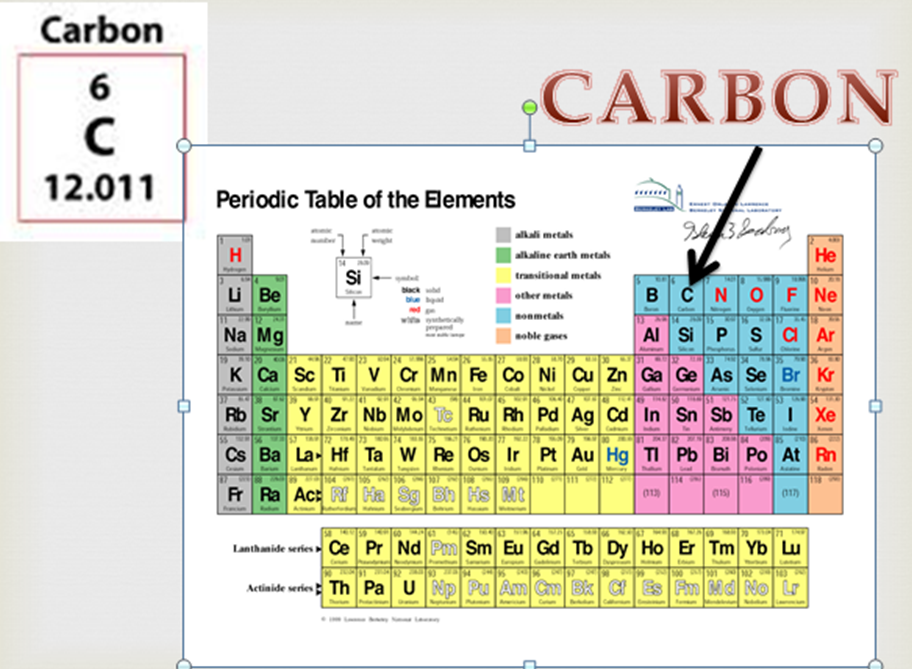

No single carbon atom has a mass of 12.01 amu, but in a handful of C atoms the average mass of the carbon atoms is 12.01 amu. This is the average atomic mass of carbon. On the periodic table the mass of carbon is reported as 12.01 amu. Since many elements have a number of isotopes, and since chemistsrarely work with one atom at a time, chemists use average atomicmass. Since there are a variety of carbon isotopes we must specify which C atom defines the scale.Īll the masses of the elements are determined relative to 12C.īy the way, the mass of an element is not equal tothe sum of the masses of the subatomic particles of which the elementis made! 12C has 6 neutrons, 13C has 7 neutrons, and 14C has 8 neutrons and so on.

Each carbon atom has the same number of protons and electrons, 6. Carbon exists as two major isotopes, 12C, and 13C ( 14C exists and has a half life of 5730 y, 10C and 11C also exist their half lives are 19.45 min and 20.3 days respectively). Why do we specify 12C? We do not simply state the themass of a C atom is 12 amu because elements exist as a variety ofisotopes. Purcell, Chemistry and Chemical Reactivity, 2nd ed., 1991.Atomic mass is based on a relative scale and the mass of 12C (carbon twelve) is defined as 12 amu. Table 2.1.3: Properties of Selected Isotopes Element (Note: we will discuss the derivation of the atomic mass in the next section). The properties of some common isotopes are in Table 2.1.3. Many elements other than carbon have more than one stable isotope tin, for example, has 10 isotopes. The nucleus of 14C is not stable, however, but undergoes a slow radioactive decay that is the basis of the carbon-14 dating technique used in archeology.
In addition to 12C, a typical sample of carbon contains 1.11% 13C, with 7 neutrons and 6 protons, and a trace 14C, with 8 neutrons and 6 protons. Consequently, it is more often written as 12C, which is read as “carbon-12.” Nevertheless, the value of Z is commonly included in the notation for nuclear reactions because these reactions involve changes in Z.įigure 2.12: Formalism used for identifying specific nuclide (any particular kind of nucleus)Īlthough carbon-12 is the most abundant type of isotope in carbon, it is not the only isotope. The subscript indicating the atomic number is actually redundant because the atomic symbol already uniquely specifies Z. The isotope of carbon that has 6 neutrons is therefore 12 6C. An isotope of any element can be uniquely represented as A ZX, where X is the atomic symbol of the element, A is the mass number and Z is the atomic number. In a typical sample of carbon-containing material, 98.89% of the carbon atoms also contain 6 neutrons, so each has a mass number of 12. The element carbon (C) has an atomic number of 6, which means that all neutral carbon atoms contain 6 protons and 6 electrons. Mass Number(A) = Number of Protons + Number of Neutrons Because different isotopes of the same element haves different number of neutrons, each of these isotopes will have a different mass number(A), which is the sum of the number of protons and the number of neutrons in the nucleus of an atom. All isotopes of an element have the same number of protons and electrons, which means they exhibit the same chemistry. Atoms that have the same number of protons, and hence the same atomic number, but different numbers of neutrons are called isotopes. Unlike protons, the number of neutrons is not absolutely fixed for most elements. Recall that the nuclei of most atoms contain neutrons as well as protons. Hence, the atomic number defines the element in question.

If you change the atomic number to 12, you are no longer dealing with sodium atoms, but magnesium atoms. That means that all sodium atoms have 11 protons. For example, the atomic number (z) for sodium (Na) is 11. The symbol for the atomic number is designated with the letter Z. This number is known as the atomic number, which identifies the number of protons in the nucleus of ALL atoms in a given element. When you study the periodic table, the first thing that you may notice is the number that lies above the symbol.


 0 kommentar(er)
0 kommentar(er)
